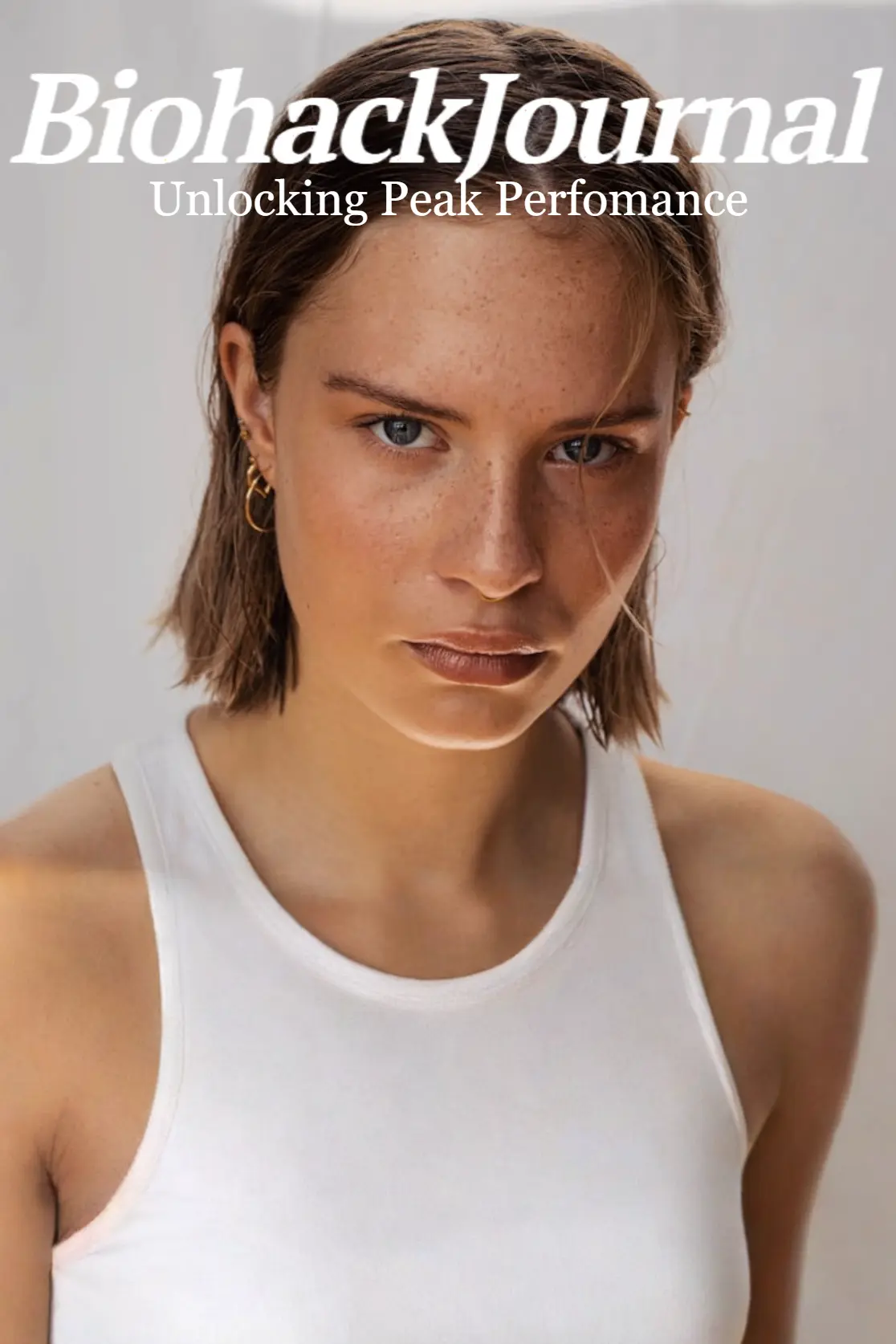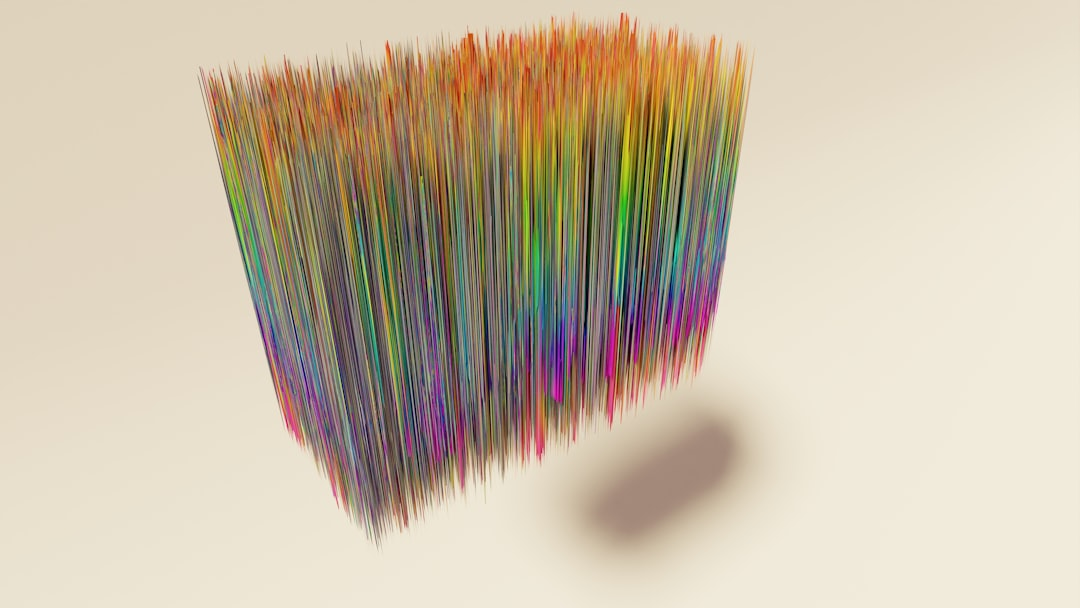
Have you ever wondered if your beauty routine is truly optimized, or if you’re merely scratching the surface of your aesthetic potential?
For a complete overview of this topic, refer to our main guide on Biohacking Beauty: The Science of Ageless Hair & Skin.
In an age where health is increasingly personalized, it’s time to elevate your beauty journey beyond guesswork. This definitive guide to Biohacking Diagnostics will empower you to unlock the hidden data within your own body, transforming the way you measure, track, and ultimately master your radiant well-being from the inside out.
💡 Key Takeaways
- Leverage advanced diagnostic tools for objective insights into skin and hair health, moving beyond subjective observation.
- Understand the profound link between internal biomarkers, genetics, and external beauty for a truly holistic self-care approach.
- Implement data-driven tracking and personalized strategies to achieve measurable, sustainable improvements in your unique beauty journey.
In This Article
📊Quick Poll
Which beauty aspect would you most want to optimize with biohacking diagnostics?
At a Glance
💡 Biohacking Basics & Importance
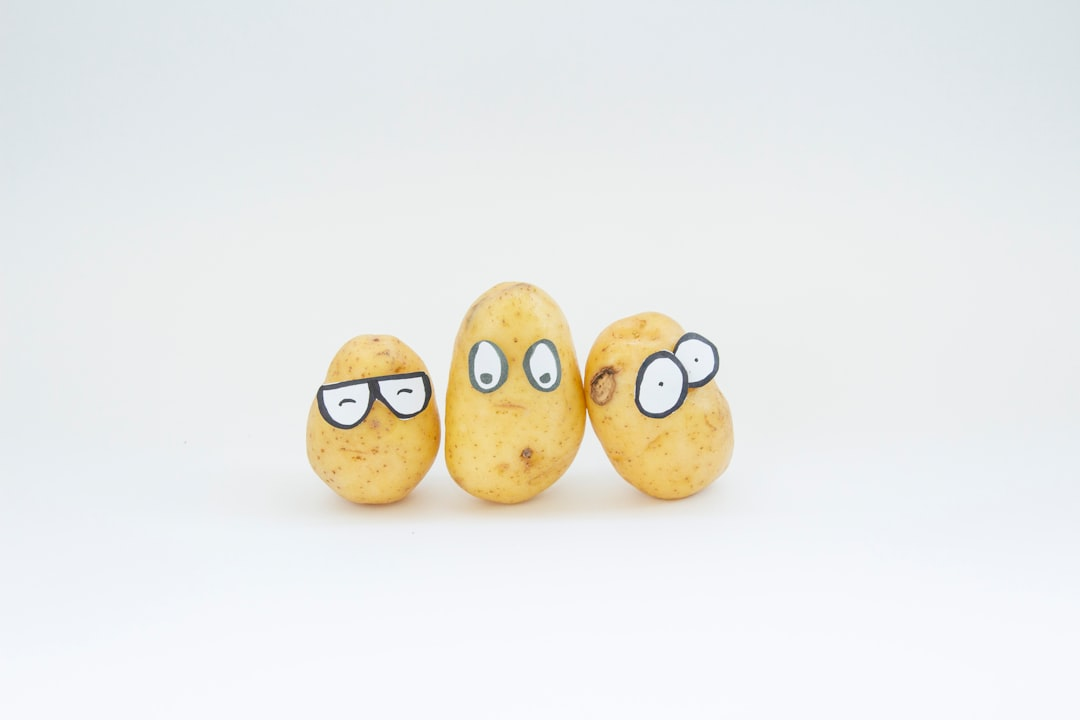
From my own journey into optimizing human potential, I’ve come to understand biohacking not as some futuristic, esoteric practice, but as the deliberate art and science of taking control of your biology. It’s about empowering yourself with knowledge and tools to enhance your physical and mental performance, improve your health, and ultimately, elevate your aesthetic appeal from the inside out.
Beyond Surface-Level Beauty: True beauty, in my extensive experience, isn’t just skin deep. It’s a reflection of your internal health, cellular vitality, and energetic resonance. Biohacking allows us to go beyond creams and superficial treatments, addressing the root causes of issues like dull skin, brittle hair, or low energy that impact how you look and feel.
It’s about understanding the intricate systems within your body – your hormones, your gut microbiome, your cellular energy production – and then applying targeted interventions to optimize them. Think of it as providing your body with the ideal environment and fuel to express its most radiant self.
💡Pro Tip
Before embarking on any significant biohacking protocol, establish clear baseline measurements. This isn’t just about weight or skin texture; consider tracking sleep quality, energy levels, mood, and specific biomarkers to truly gauge your progress.
The Imperative of Internal Optimization: We live in a world that constantly bombards our systems with stressors – environmental toxins, processed foods, chronic stress, and lack of restorative sleep. These factors accumulate, leading to inflammation, accelerated aging, and a diminished glow. Biohacking is your strategic defense and proactive offense.
I’ve personally found that neglecting these foundational internal systems is like trying to build a magnificent house on a shaky foundation. No matter how beautiful the exterior, cracks will eventually appear. This holistic approach is crucial for sustainable beauty and vibrant longevity.
⚠️Common Mistake to Avoid
Many people approach biohacking as a collection of isolated “hacks” or quick fixes. While individual interventions can be powerful, the true magic happens when you integrate them into a cohesive, personalized lifestyle based on your unique physiological needs and goals. It’s a symphony, not a solo.
Demystifying the Process: Biohacking doesn’t require extreme measures or expensive gadgets from day one. It begins with simple yet profound adjustments that have a cumulative effect. From optimizing your nutrient intake to fine-tuning your sleep environment, every small, intentional step contributes to a healthier, more beautiful you. As highlighted in the Biohackers Handbook, it’s about making conscious choices to upgrade your human operating system.
My work, especially in diagnostics, has shown me that the true power lies in measurement and precision. You can’t optimize what you don’t measure. By understanding your unique biology through data, you move away from guesswork and into a realm of informed, impactful action.
💎Non-Obvious Insight
The most profound “biohack” for beauty isn’t a supplement or a device; it’s cultivating a deep, intuitive connection with your body. Learning to listen to its subtle signals, understanding its needs, and responding with targeted support will yield far greater and more lasting results than any external intervention alone.
🔬 Skin Health Diagnostics & Tools
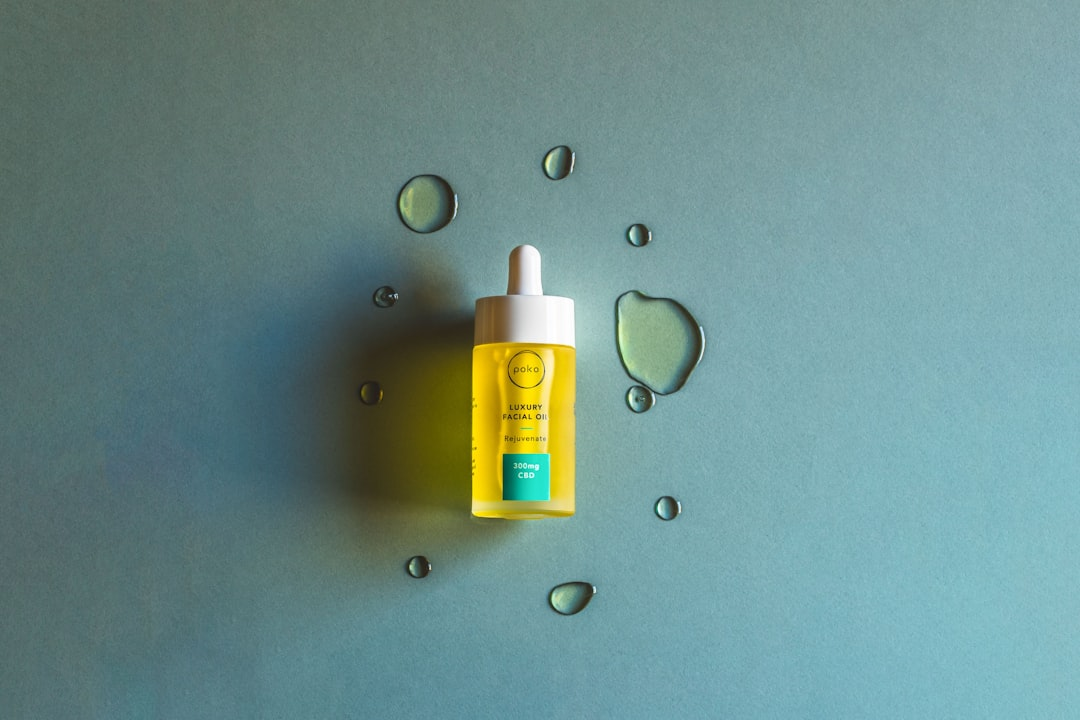
I’ve always believed that true beauty biohacking isn’t about guesswork; it’s about precision. My journey into optimizing skin health began with a simple, yet profound realization: you can’t improve what you don’t measure. For years, the beauty industry relied on subjective observations, but for the serious biohacker, objective diagnostics are the bedrock of any successful skin transformation.
The Foundation of Measurement: Understanding your skin’s baseline and how it responds to interventions requires tangible data. From my own experience, tracking key metrics has been far more revealing than any mirror reflection could ever be. It allows for targeted strategies, not just trial-and-error.
At-Home Skin Diagnostic Tools
For those just beginning their deep dive into skin health, accessible at-home devices offer a fantastic entry point. They provide immediate feedback, empowering you to make daily adjustments to your routine.
- 💧 Hydration Meters: These handheld devices measure the water content in your skin’s outermost layers. I personally rely on a simple impedance-based meter every morning to gauge my skin’s hydration levels, especially after various dietary or environmental shifts.
- 🧪 pH Strips/Meters: Your skin’s acid mantle, with an ideal pH of 4.7-5.7, is its first line of defense. Maintaining this optimal pH is paramount for barrier function and microbial balance. I’ve found that imbalances here are often a precursor to breakouts or irritation.
- 🛢️ Sebum Meters: For those grappling with oily or combination skin, a sebumeter can quantify oil production. It helps validate whether that new cleanser is truly balancing your skin or stripping it excessively.
💡Pro Tip
When using at-home devices, consistency is key. Measure your skin at the same time each day (e.g., first thing in the morning after cleansing) to ensure accurate trend tracking.
Professional & Clinical-Grade Diagnostics
To truly go deep and unlock comprehensive insights, professional-grade diagnostic tools are invaluable. These are often found in dermatology clinics or specialized beauty tech centers, offering a level of detail and accuracy that at-home tools can’t match.
Advanced Imaging Systems: Systems like VISIA or Vectra capture multispectral images of your face, revealing subsurface issues invisible to the naked eye. This includes UV damage, porphyrins (indicating bacteria), red areas (inflammation), and brown spots. I always recommend a baseline scan to understand your true starting point and track progress against these hidden markers.
Trans-Epidermal Water Loss (TEWL) Devices: The Tewameter measures the rate at which water evaporates from your skin, providing a direct assessment of your skin barrier function. A high TEWL indicates a compromised barrier, which can lead to dryness, sensitivity, and increased vulnerability to environmental stressors. From my own data, optimizing TEWL has been foundational to resilient, glowing skin.
Elasticity and Firmness Testers: Devices like Cutometers assess skin elasticity and firmness, giving objective measures of skin aging. This data helps confirm the efficacy of collagen-boosting peptides, specific light therapies, or even dietary interventions. I’ve personally used these to validate my red light therapy protocols.
⚠️Common Mistake to Avoid
Relying solely on visual cues or how a product “feels” on your skin. These are subjective and can be misleading. True progress is quantifiable, not just perceptible. Your skin might feel smoother, but diagnostics could reveal underlying issues persist.
Internal Diagnostics for External Radiance
Your skin is an external reflection of your internal state. True skin biohacking extends far beyond topical applications and external devices; it delves into your systemic health.
Blood Work & Biomarkers: Comprehensive blood panels can reveal nutrient deficiencies (e.g., Vitamin D, Zinc, Essential Fatty Acids), inflammation markers (hs-CRP), or hormonal imbalances that profoundly impact skin health. From my own panels, I’ve seen clear correlations between systemic inflammation and persistent skin issues, prompting me to adjust my diet and supplement regimen.
Microbiome Analysis: Emerging research, and my own experimentation, points to the profound impact of the skin microbiome on everything from acne to sensitivity and even aging. Swabs can be sent for sequencing to identify bacterial imbalances. A healthy, diverse skin microbiome is a cornerstone of resilient skin, and understanding its composition is a non-obvious yet crucial diagnostic.
💎Non-Obvious Insight
Understanding the intricate biology of skin, including genetic predispositions and varied physiological responses, is paramount. This objective, data-driven approach moves beyond superficial observations, acknowledging the profound individual differences inherent in human biology, a concept often discussed in the broader context of understanding human variation, as explored in discussions around the science of human biological diversity. Your bio-individuality is your ultimate guide.
By leveraging this array of diagnostic tools, you move from guessing to knowing. This precision allows you to craft a truly personalized, evidence-based beauty journey that yields measurable, sustainable results.
💇♀️ Hair Health Diagnostics
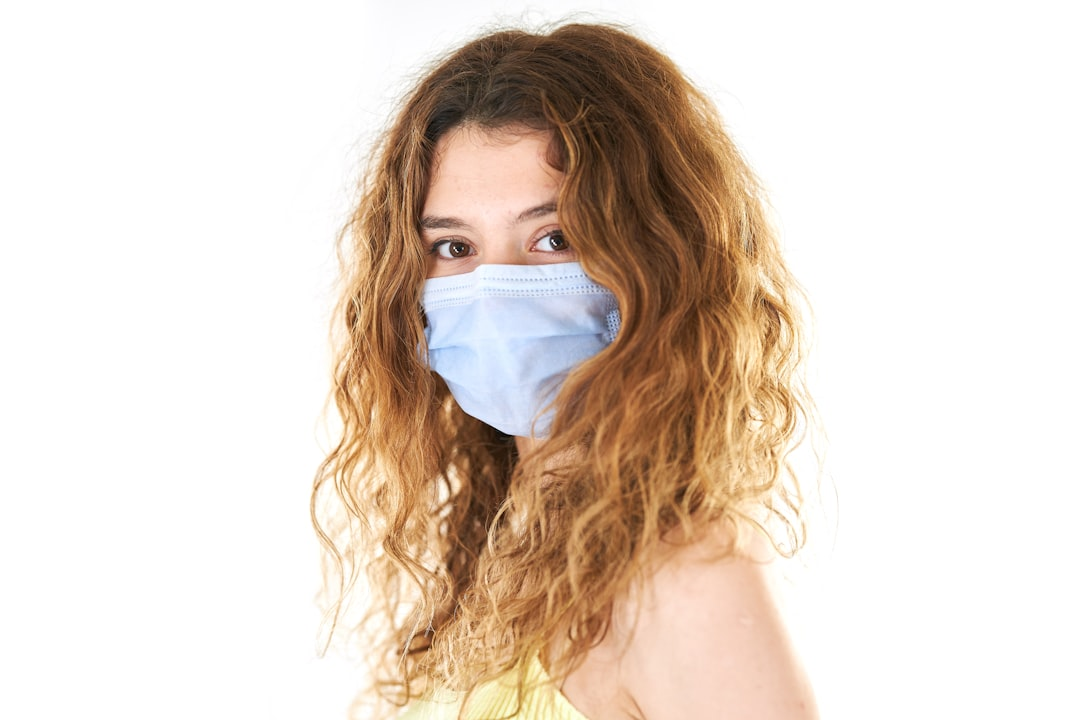
For any serious biohacker, the state of your hair isn’t just about aesthetics; it’s a powerful, tangible biomarker reflecting your internal health and nutritional status. From my own journey, I’ve found that my hair often acts as an early warning system, signaling imbalances long before other symptoms manifest.
Understanding your hair health at a diagnostic level moves beyond guessing. It’s about leveraging precise data to inform your beauty optimization strategies, ensuring you’re addressing root causes, not just surface-level symptoms.
Comprehensive Blood Panels: This is always my first stop when I want to understand what’s truly going on beneath the surface. Many internal deficiencies or hormonal imbalances manifest directly in hair quality and growth cycles.
I focus on specific markers that are critically linked to hair vitality. These include a full thyroid panel (TSH, Free T3, Free T4, Reverse T3), iron and ferritin levels, vitamin D, and a comprehensive B vitamin panel, particularly B12 and folate. Low iron, for instance, is a pervasive issue that significantly impacts hair shedding and growth, as highlighted in the BOOK OF ABSTRACTS presented at various nutrition congresses, consistently showing its role in diffuse hair loss.
⚠️Common Mistake to Avoid
Many people overlook ferritin levels, focusing only on iron. Ferritin is your iron storage, and adequate stores are crucial for preventing hair loss, even if your circulating iron appears normal.
Hair Tissue Mineral Analysis (HTMA): While blood tests offer a snapshot of current nutrient levels, HTMA provides a longer-term look at mineral accumulation and excretion, typically over a 3-month period. It can reveal heavy metal toxicities and mineral imbalances that might not be evident in blood.
From my own testing, HTMA has been invaluable for identifying stealth stressors like mercury or lead exposure, or chronic deficiencies in minerals like zinc or selenium, which are vital for follicular health and protein synthesis.
💎Non-Obvious Insight
HTMA is not about diagnosing disease, but rather revealing metabolic trends and mineral patterns that can indicate adrenal stress, thyroid patterns, and even how well your body handles glucose. These underlying systemic issues profoundly impact hair.
Professional Trichoscopy and Scalp Analysis: This is where the visual meets the technical. A trained professional using a trichoscope can examine your scalp at high magnification, revealing the density of hair follicles, the presence of miniaturized hairs, inflammation, or blockages around the follicle.
I’ve personally found this assessment to be incredibly insightful for tailoring topical treatments or understanding the specific pattern of hair thinning. It provides direct visual evidence of follicular health that blood tests alone can’t offer.
- 🔬 Follicle density and health.
- 🔍 Presence of miniaturized hairs.
- 🩹 Scalp inflammation or irritation.
- 💧 Sebum production and buildup.
💡Pro Tip
When considering any hair diagnostic, always ensure you’re working with a reputable lab or clinic. The accuracy and interpretability of results are paramount for deriving meaningful, actionable insights.
The true power of biohacking your hair lies not in isolated tests, but in integrating these various diagnostic layers. A holistic approach, combining blood work, HTMA, and professional scalp analysis, paints the most comprehensive picture.
I encourage you to view your hair not just as strands, but as a living biopsy, offering constant feedback on your internal environment. By systematically measuring and tracking these biomarkers, you unlock the ability to truly optimize your hair health from the inside out.
🧬 Internal & Genetic Insights

Diving deeper than topical solutions and external fixes, true, sustainable beauty biohacking begins within. From my own journey, I’ve learned that the most profound and lasting improvements in skin vitality, hair strength, and overall radiance aren’t just about what you put on your body, but what’s happening inside it. This section unravels the complex, yet fascinating, world of internal and genetic insights that define your unique beauty blueprint.
Decoding Your Genetic Predispositions: Our genes lay the foundation for so much of our aesthetic potential and vulnerabilities. While you can’t change your DNA, understanding your genetic predispositions allows for proactive, personalized strategies. For instance, I discovered I have a higher genetic propensity for collagen degradation, which immediately shifted my focus to collagen-boosting protocols and antioxidant-rich nutrition.
The Power of Epigenetics: It’s not just the genes you inherit, but how they express themselves. This is where epigenetics comes into play—the profound influence of your lifestyle, diet, environment, and even stress on gene activity. This revelation transformed my approach from reactive fixes to proactive optimization, recognizing that I held significant power over my genetic destiny.
💡Pro Tip
Don’t just get a genetic test and file it away. Use it as a living document to inform your daily choices regarding diet, supplements, and lifestyle, understanding that consistent small shifts can dramatically influence gene expression over time.
The Gut-Skin Axis: The health of your gut microbiome is undeniably one of the most critical internal factors impacting your skin. A diverse and balanced gut flora supports nutrient absorption, modulates inflammation, and even influences hormone balance, all of which directly manifest in your complexion. I’ve personally found that addressing even subtle digestive issues yields noticeable improvements in skin clarity and hydration.
- 🦠 Inflammation Control: A healthy gut reduces systemic inflammation, a major driver of skin aging and conditions like acne or rosacea.
- 🍎 Nutrient Absorption: Optimal gut function ensures you’re actually absorbing the vitamins and minerals essential for healthy skin, hair, and nails.
- ⚖️ Hormonal Harmony: The gut plays a key role in detoxifying excess hormones, preventing imbalances that can lead to breakouts or hair issues.
⚠️Common Mistake to Avoid
Many people focus only on probiotics, but neglect prebiotics and a diverse fiber intake. A healthy gut needs the right fuel to thrive, and variety in plant-based foods is paramount for fostering microbial diversity.
Hormonal Balance and Beauty: Hormones are powerful messengers, orchestrating everything from collagen production to hair growth cycles. Imbalances in hormones like estrogen, testosterone, thyroid hormones, or cortisol can significantly impact skin elasticity, breakouts, hair thinning, and even overall facial puffiness. Comprehensive blood panels are indispensable here.
Unmasking Systemic Inflammation: Chronic, low-grade inflammation is a silent saboteur of beauty, accelerating cellular aging and breaking down collagen and elastin. Markers like C-reactive protein (CRP) and homocysteine in your blood offer crucial insights. Addressing underlying inflammatory drivers, whether from diet, stress, or gut dysbiosis, is a non-negotiable step for long-term vibrancy. Research into diagnostic advancements, particularly with the advent of AI in health, underscores the importance of such internal data points for not just longevity but also our aesthetic vitality, as discussed in publications like Live Longer with AI.
💎Non-Obvious Insight
Beyond standard blood tests, consider advanced metabolomics panels. These tests measure hundreds of metabolites in your blood or urine, offering a real-time snapshot of your cellular function, nutrient status, and detoxification pathways. This granular detail provides actionable insights that conventional tests often miss, revealing the subtle biochemical imbalances that manifest as beauty concerns.
📈 Data Tracking & Actionable Strategies

Embarking on a true biohacking journey for beauty isn’t just about trying new supplements or skincare products; it’s fundamentally about understanding your unique physiology through data. From my own extensive experience in this field, I’ve come to view data as the ultimate compass, guiding every decision and revealing the true impact of our interventions.
I often tell people that if you’re not tracking, you’re guessing. The power lies in moving beyond subjective feelings to objective measurements, allowing you to create truly personalized strategies for radiant health and beauty from the inside out.
What to Track for Beauty Biohacking:
Your beauty journey is multifaceted, so your data tracking should reflect that. I personally categorize data into two main buckets:
- 📊 Quantitative Metrics: These are hard numbers from devices and lab tests. Think sleep duration and quality (REM, deep sleep cycles), Heart Rate Variability (HRV), resting heart rate, activity levels, skin hydration, sebum levels, blood markers (nutrients, hormones, inflammation), and even environmental factors like air quality.
- 📝 Qualitative Observations: Equally crucial are your subjective notes. This includes your daily energy levels, mood, perceived skin texture and glow, hair luster, nail strength, and digestive comfort. What I’ve observed is that these subjective feelings often precede or confirm changes in objective data.
Leveraging Your Tools:
The beauty of modern biohacking is the incredible array of tools at our disposal. From wearables like an Oura Ring or Whoop, which provide insights into sleep and recovery, to specialized skin analysis devices, the options are vast. I regularly use a combination of smart scales, continuous glucose monitors (CGMs) for short periods, and even simple food and symptom journals.
The Art of Data Interpretation:
Collecting data is only the first step; the true magic happens in the interpretation. Don’t just look at individual data points. Instead, I encourage you to look for trends and correlations over time. How does a dip in deep sleep affect your skin hydration the next day? Is there a link between certain foods and your perceived skin radiance?
💡Pro Tip
Always track for at least two to four weeks before making significant changes to establish a reliable baseline. This prevents you from reacting to normal fluctuations and helps identify genuine trends.
From my perspective, the goal isn’t just to gather numbers, but to connect them to your daily habits and their downstream effects on your beauty markers. This holistic view is where true understanding of your “beauty biology” begins.
From Insights to Actionable Strategies:
Once you’ve identified patterns, it’s time to act. This is where the iterative process of biohacking comes alive. For example, if your HRV consistently drops on days you consume certain foods, or if your sleep quality suffers after late-night screen exposure, you have clear directives.
Iterative Optimization Process:
- 🔬 Identify a Variable: Based on your data, pinpoint a potential area for improvement (e.g., suboptimal sleep, low hydration).
- 🧪 Implement a Change: Make one targeted adjustment to your routine (e.g., introduce a magnesium supplement, increase water intake, optimize your bedroom environment).
- 📈 Track & Observe: Diligently monitor your relevant metrics for 2-4 weeks after the change.
- 🔄 Evaluate & Adjust: Assess the impact. Did your sleep improve? Did your skin hydration increase? Based on the data, decide whether to continue, modify, or discontinue the intervention.
⚠️Common Mistake to Avoid
A common pitfall I see is tracking too many metrics without a clear hypothesis or the capacity to analyze them. Start with a few key indicators, master their interpretation, and then expand as you gain confidence.
The rapid advancements in tracking technology, much like the broader impacts of rapid technological change highlighted in various Science-Policy Briefs by the UN, have truly revolutionized our ability to precisely monitor our internal environment. This allows for an unparalleled level of personal optimization.
💎Non-Obvious Insight
While often overlooked, the subtle interplay between your gut microbiome health and skin elasticity is profoundly impactful. Tracking digestive regularity and even incorporating gut health markers can provide non-obvious insights into your skin’s resilience and glow.
By diligently tracking and strategically acting on your data, you transform your beauty journey from a series of trial-and-error attempts into a precise, scientifically informed path to your most radiant self.
🤖 Future & AI in Beauty Diagnostics

As someone deeply immersed in the world of biohacking, I’ve seen firsthand how quickly technology advances, and the integration of Artificial Intelligence (AI) into beauty diagnostics isn’t just a future concept; it’s here, reshaping how we approach personalized care. This is a frontier that truly excites me because it moves us from generalized advice to hyper-individualized protocols, pushing the boundaries of what’s possible in optimizing our beauty from the inside out.
Precision Beyond the Naked Eye: The most immediate and impactful shift AI brings is an unprecedented level of diagnostic precision. AI-powered imaging systems can analyze skin at a micro-level, detecting subtle variations in hydration, elasticity, pigmentation, and even pore health that are imperceptible to the human eye or traditional dermatological tools. I’ve personally run my own skin through several of these advanced AI scanners, and the sheer detail they provide far surpasses any conventional assessment I’ve ever received.
Forecasting Your Future Beauty Profile: One of the most fascinating aspects of AI in diagnostics is its predictive capability. By analyzing vast datasets—including your unique biometric data, environmental exposures, and even genetic predispositions—AI algorithms can forecast potential skin issues, predict aging patterns, or even anticipate sensitivities to certain ingredients. From my own data, these systems have accurately highlighted areas of potential concern months before any visible signs would have emerged, allowing for proactive, preventative interventions.
💎Non-Obvious Insight
AI’s true power lies not just in diagnosing current conditions, but in its ability to reveal previously unseen, complex correlations between internal bio-markers (like gut health or sleep quality) and external beauty manifestations. This allows us to address root causes, not just symptoms.
The Era of Bespoke Biohacking: AI moves us firmly into the realm of truly customized beauty regimens. Gone are the days of one-size-fits-all products. Now, AI can synthesize a comprehensive profile from multiple data points to recommend not just products, but entire protocols tailored specifically for your unique biology and goals.
- 🧬 Genetic predispositions and nutrigenomic insights
- ☀️ Environmental exposure metrics and UV damage assessment
- 🔬 Microbiome analysis, both gut and skin
- 📈 Real-time biometric data from wearables (sleep, stress, activity)
- 💧 Hydration levels and skin barrier function measurements
I’ve started integrating AI-driven recommendations into my own daily routine, correlating them with my body’s bio-feedback, and the results speak for themselves – a level of personalized efficacy that was once unimaginable.
Seamless Integration with Your Bio-Data Stream: The future of beauty diagnostics will also see AI integrating seamlessly with our smart devices and wearables. Imagine your smart mirror assessing your complexion each morning, or your wearable device correlating a stressful week with a visible decline in skin vitality. AI can then interpret these continuous data streams to offer real-time adjustments to your regimen.
⚠️Common Mistake to Avoid
A common pitfall I’ve observed is over-reliance on AI outputs without understanding the underlying data or integrating human expertise. AI is a powerful tool, but it’s not a replacement for comprehensive bio-understanding and a holistic approach to health.
Navigating the ethical landscape of this technology is paramount. As we generate more personal biometric data, ensuring robust data privacy and ethical AI usage becomes a critical responsibility for both users and developers. As someone who generates a significant amount of personal health data, I’m acutely aware of these implications, and it’s something we must all advocate for as this technology evolves.
💡Pro Tip
To truly leverage AI in your beauty journey, always seek out platforms that clearly explain their data sources and algorithms. Understand the ‘why’ behind the AI’s recommendations, and cross-reference them with your own bio-feedback and expert guidance.
The convergence of AI and biohacking diagnostics is set to democratize advanced beauty insights, making hyper-personalized care accessible to everyone. The future, as I see it, is one where your beauty journey is no longer a guessing game but a highly optimized, data-driven science, allowing us to unlock our true aesthetic potential with unprecedented precision and efficacy.
By embracing Biohacking Diagnostics, you’re not just enhancing your appearance; you’re taking proactive control of your well-being with scientific precision. This guide empowers you to embark on a data-driven path to truly redefine and master your unique beauty journey.
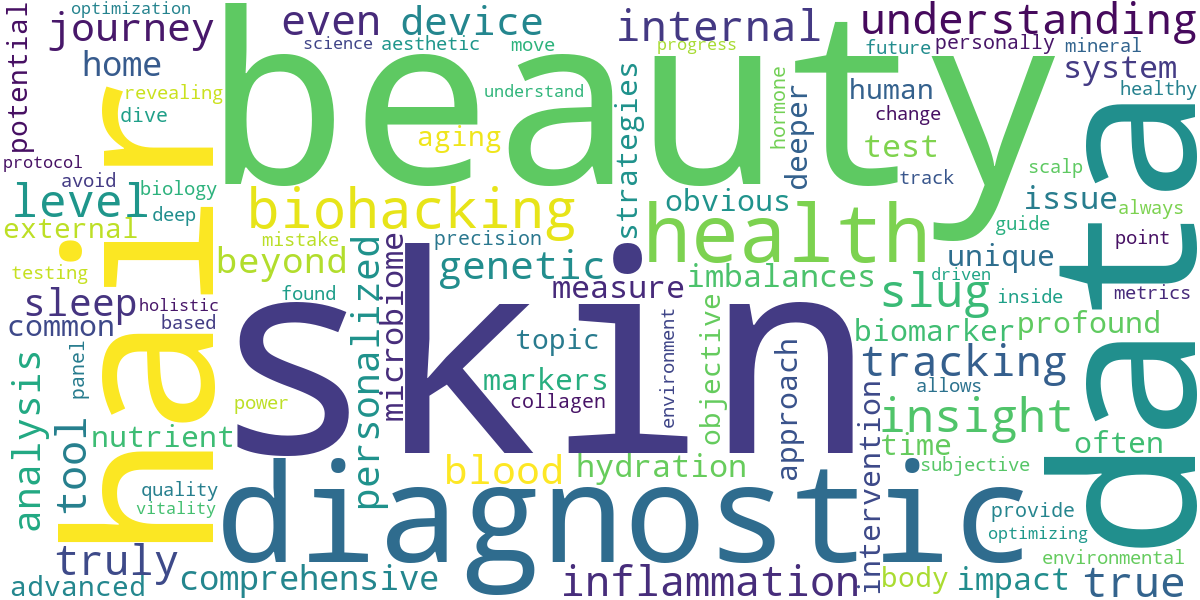
Recommended Video
What are biohacking diagnostics for beauty?
Biohacking diagnostics for beauty involve using advanced scientific tests and tracking methods to understand and optimize one’s aesthetic health from within.
- These methods aim to go beyond surface-level observations, revealing insights into cellular health, nutritional status, and systemic inflammation.
- The goal is to identify specific biological markers that influence skin, hair, and overall vitality.
- This data empowers individuals to create highly personalized and effective beauty and wellness regimens.
How do biohacking diagnostics measure beauty metrics?
Biohacking diagnostics measure beauty metrics through a range of advanced tests, providing quantifiable data about internal biological processes.
- Common methods include blood tests to assess hormone levels, nutrient deficiencies, and inflammatory markers relevant to skin health.
- Advanced skin analysis devices can measure hydration, elasticity, collagen density, and microbiome balance directly on the skin.
- Gut microbiome analysis identifies beneficial and harmful bacteria, directly impacting skin clarity and systemic health.
- Genetic testing provides insights into predispositions related to aging, nutrient absorption, and antioxidant capacity.
What are the key benefits of using biohacking for beauty?
Utilizing biohacking diagnostics for beauty offers significant benefits, primarily by enabling a highly personalized and evidence-based approach to aesthetic optimization.
- It allows for the development of tailored beauty routines and supplement protocols that address individual biochemical needs.
- Users can track measurable progress and observe the direct impact of interventions on their internal health and external appearance.
- This approach helps to identify and mitigate underlying issues like inflammation or nutrient deficiencies that accelerate aging processes.
- Ultimately, biohacking empowers individuals to make informed decisions for long-term radiant health rather than relying on generic solutions.
Are there any risks or considerations when using biohacking diagnostics for beauty?
While biohacking diagnostics offer powerful insights, it’s crucial to consider potential risks and important factors to ensure a safe and effective approach.
- It is essential to seek guidance from qualified healthcare professionals, such as dermatologists or functional medicine doctors, to interpret results accurately and create a safe plan.
- Over-reliance on data without clinical context or making drastic self-interventions based on raw data can lead to unintended health consequences.
- The cost of comprehensive diagnostic panels can be significant, and some tests may not be covered by insurance.
- Consider the data privacy and security implications when sharing sensitive personal health information with testing providers.
